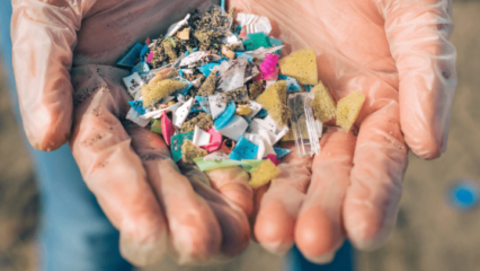Companies news
COP26: Plastic, a key role in global warming

An article by The SeaCleaners.
As greenhouse gas emissions continue to rise, governments are facing an unprecedented crisis and must intensify their efforts to reach the goals set 6 years ago in the Paris Agreement. 167 Nations are meeting from November 1st to November 12th for the COP26 in Glasgow to evaluate and review the priorities to face the climate emergency. The SeaCleaners will take part in this important event in order to bring its expertise on plastic pollution, one of the factors of global warming.
Representing more than 70% of the planet’s surface, the ocean is the largest life support system on the planet.
It is, along with the forests, one of the two “lungs of the planet”. More than 50% of the oxygen we breathe is provided by phytoplankton living on the surface of the oceans. It is made up of plant microorganisms capable, through photosynthesis, of making organic matter from light, carbon dioxide and nutrients, and releasing oxygen into the air.
Considered as the planet’s “thermostat”, it permanently exchanges energy, humidity, gases and heat with the atmosphere. Thanks to ocean currents, this heat is redistributed across the globe, which reduces the temperature differences between the poles and the equator: it is a real climate regulator.
These multiple exchanges and interactions make the ocean a “carbon pump” via biological and physical phenomena. Phytoplankton and other species absorb some of the carbon and store it in their skeletons which are deposited on the ocean floor. It is thus stored and no longer contributes to the greenhouse effect.
Plastic, a deadly legacy for our oceans
But since the 1950s, more than 198 million tons of plastic have been dumped into the oceans. A tragedy when you know that this material takes more than 450 years to degrade and never dies. Lining the seabed or floating on the surface, plastics are all bound to break into billions of pieces of plastic.
There are more plastic microparticles in the oceans today than there are stars in the known universe: up to 12,000 microparticles per liter of water.
But what are the consequences of this plastic pollution?
For a long time, we have treated plastic pollution and global warming as two different issues. However, the two subjects are linked! In its report “Plastic & Climate: The dark side of a plastic planet” published in May 2019, the CIEL (International Center for Environmental Law) develops three direct bonds: production, transport and exploitation: The plastics industry, towards the carbonisation of our economy.
Almost all plastic is derived from materials made from fossil fuels (primarily oil and gas). Today, about 4 to 8% of the world’s annual oil consumption is associated with plastics. If this reliance on plastics continues, plastics will account for 20% of oil consumption by 2050.
In May 2021, the UN sounded the alarm with a report concluding that the impact of plastic production on the global climate this year will be equivalent to the production of 189 coal-fired power plants, and that if nothing is done, it could account for up to 13% of our planet’s total carbon budget by 2050 (i.e. 615 power plants). Reducing our dependence on plastic, especially single-use plastic, which accounts for between 50 and 60% of our plastic consumption, means directly helping to decarbonise our economy.
“Today, about 4-8% of annual global oil consumption is associated with plastics. If this reliance on plastics continues, plastics will account for 20% of oil consumption by 2050” says the world economic forum.
Decomposing waste emits greenhouse gases
Because at every stage of its life cycle, and even long after it is discarded, plastic creates greenhouse gas emissions that contribute to global warming. In an interview given in January 2021, Dr. Sarah-Jeanne Royer, oceanographer, member of our Scientific Advisory Bord and specialist at the Scripps Institution of Oceanography on plastic degradation, told us that all plastics, including low density polyethylene, one of the most common types of plastic in the ocean, when exposed to UV light, react by releasing potent greenhouse gases, including methane.
This leads to an alarming feedback loop. As our climate changes, the planet warms, the plastic breaks down into more methane and ethylene, accelerating the rate of climate change and thus perpetuating the cycle.
“It's scary to think that all the plastics around us emit greenhouse gases: our cars, our swimming pools, all of this contributes to global warming” says Dr. Sarah-Jeanne Royer, oceanographer.
Indirect cause linked to the absorption of microplastics
The latest scientific studies show that phytoplankton is ingesting ever increasing quantities of microplastics, which would decrease its capacity to absorb carbon, according to the IPCC’s latest report.
But more than that, plastic has a direct impact on marine biodiversity: 1.5 million animals are killed each year and 1400 species are affected by this plague.
As COP26 opens in Glasgow, the impact of plastic pollution on our climate is clear. The number one priority of major institutions and political leaders must be the safeguard and preservation of our vulnerable blue planet. The climate crisis does not leave us any more time to play the wizard’s apprentice with the oceans.